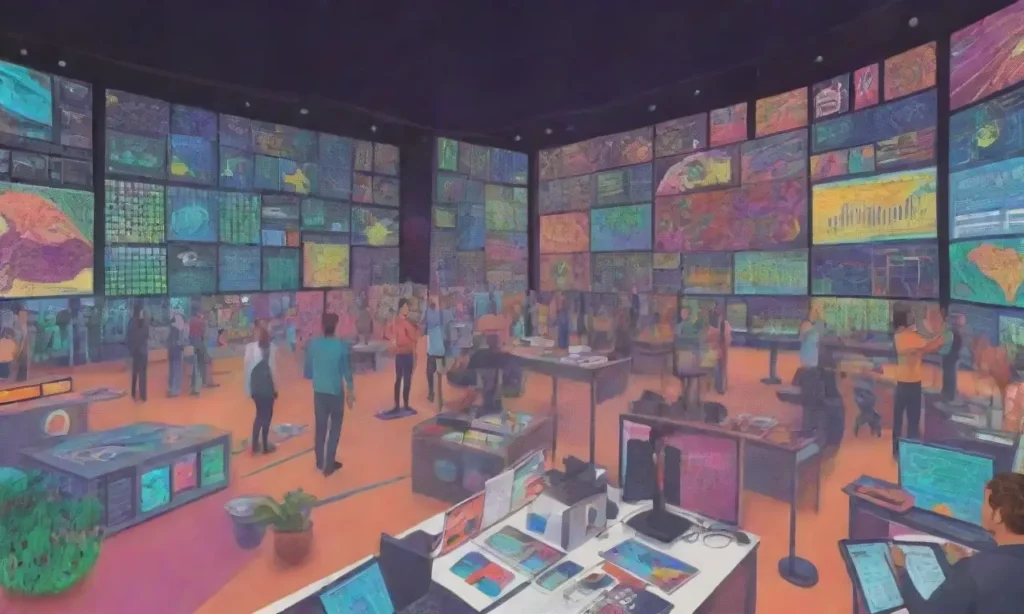
Analyzing User Behavior in VR through Machine Learning Insights

Introduction
Virtual Reality (VR) has emerged as a revolutionary technology that reshapes how users interact with digital environments. It transports users into a myriad of immersive experiences, from gaming and entertainment to education and training simulations. Understanding how users behave in these virtual spaces is crucial for enhancing user experiences and optimizing VR applications. Analyzing user behavior in VR offers valuable insights into user preferences, engagement levels, and overall satisfaction, ultimately leading to greater innovations in the field.
This article delves deeply into the intersection of user behavior analysis, machine learning, and virtual reality. We will explore how these elements combine to offer a framework for understanding and predicting user interactions in immersive environments. Through various methodologies and case studies, we’ll highlight the transformative potential of integrating machine learning techniques to enhance VR experiences.
Importance of Understanding User Behavior in VR
The primary objective of analyzing user behavior in VR lies in crafting experiences that resonate with users on a profound level. Unlike traditional media, where user feedback can be gathered through surveys or observational methods, VR requires a different approach due to its immersive nature. Users are physically, emotionally, and cognitively invested in their environments, significantly affecting their interactions and experiences. Understanding user behavior in such contexts allows developers and designers to cater experiences that align with user expectations.
One of the most significant reasons for this in-depth analysis is the customization potential it provides. By leveraging user behavior data, developers can create highly personalized experiences that adapt in real-time to individual preferences. For instance, if a user tends to gravitate towards certain types of games or experiences in a VR setting, machine learning algorithms can detect these patterns, enabling the system to suggest or even dynamically modify scenarios to enhance engagement. Personalization in VR not only fosters deeper connections between users and the technology but also improves retention rates and user satisfaction.
Innovative Uses of Reinforcement Learning in VR Business TrainingMoreover, understanding user behavior can significantly impact educational and training applications of VR. For instance, in medical training simulations, analyzing how trainees interact with virtual patients can pinpoint areas that require additional focus or comprehension. This data, when applied correctly through machine learning models, allows instructors to adjust their teaching methods or content to better suit learner needs, ultimately leading to improved educational outcomes.
Machine Learning Techniques for User Behavior Analysis
To effectively analyze user behavior in VR, various machine learning techniques can be employed. These range from basic algorithms to advanced models that create predictive analytics, shedding light on user interactions in virtual spaces. One of the foundational algorithms used in this approach is supervised learning, which relies on labeled datasets to train models to recognize specific patterns in user behavior. For instance, if data captures which areas users frequently navigate to within a VR game, supervised learning can help predict future navigation behaviors based on past interactions.
Another critical technique used in analyzing user behavior is clustering, a form of unsupervised learning that groups similar data points together without predefined labels. In the context of VR, clustering can identify unique user segments based on behavior, preferences, or interaction metrics. This process allows developers to observe different user personas, leading to a better understanding of varying experiences within the same virtual environment. For example, users showcasing different engagement levels or exploring different aspects of the environment can be grouped and analyzed for targeted enhancements.
Moreover, reinforcement learning has emerged as particularly promising in the VR domain. It revolves around agents that learn to make decisions through trail-and-error interactions within simulated environments. In a VR context, this could manifest in adaptive systems that modify user experiences based on real-time behavior. For instance, a VR game can employ reinforcement learning to adjust the difficulty level based on how well users are performing, thereby striving to maintain an optimal engagement level. By continuously learning from user interactions, the system becomes more adept at tailoring the experience, resulting in a significantly improved user journey.
The Synergy of Machine Learning and VR for Artistic ExpressionData Collection Mechanisms
Understanding user behavior confidently relies on the collection of accurate data, which poses challenges and demands careful planning. Various mechanisms exist to collect data from VR interactions, each with its own benefits and limitations. One standard method for data collection is head tracking, where the movement and orientation of the user’s head are recorded. This data can reveal not only where users are looking but also the duration of their focus on specific elements within the environment.
Another vital dataset can be obtained through interaction tracking. This mechanism records engagement metrics such as controller movements, object manipulations, or even the duration of time spent in various scenarios. Interaction data allows researchers to determine which aspects of a virtual experience capture user interest, thus informing design improvements. However, it is essential to balance thorough data collection with user privacy concerns, as ethical considerations around data usage in VR settings are paramount.
Additionally, biofeedback mechanisms have gained traction recently, offering insights into the user's physiological responses. These methods can range from measuring heart rates, eye movements, and galvanic skin responses, providing data on how emotionally engaged a user is during a VR experience. Insights from biofeedback can enhance the understanding of user behavior, particularly in applications where emotional engagement is critical, such as therapy or training simulations.
Challenges in Analyzing User Behavior in VR

While the potential for user behavior insights in VR is vast, several challenges must be addressed. One major hurdle is the complexity of user experiences, which can vary significantly from one person to another. Variability in VR experiences—stemming from hardware differences, user backgrounds, and personal preferences—can create difficulties in creating generalized models that accurately predict behavior. As such, more research is needed to develop sophisticated algorithms that can adapt to diverse user profiles.
Moreover, user behavior in VR is often context-dependent. For example, a user might interact differently with a virtual environment while experiencing a gaming scenario compared to a training simulation. Contextual factors, such as the user’s emotional state or specific objectives within the VR experience, play crucial roles in shaping behavior, complicating the analysis. Subsequently, machine learning models must be designed with context-awareness to enhance predictivity and relevancy.
Ethical considerations also emerge as critical challenges when analyzing user behaviors in VR environments. User privacy must be prioritized, meaning that data collection methods should be transparent, and users should be informed of how their data will be used. The integration of sensitive data, such as emotional responses captured through biofeedback, raises ethical questions about consent and data protection. Responsible approaches must be adopted to preserve user trust while maximizing the insights gleaned from their interactions.
Conclusion
Analyzing user behavior in VR through machine learning insights represents a frontier that offers profound potential for enhancing user experiences. As this discipline continues to evolve, researchers, developers, and educators stand to benefit significantly from understanding the intricate dynamics of user interaction within virtual environments. Through employing a range of machine learning techniques—from supervised learning to biofeedback data analysis—stakeholders can refine their applications to align better with user needs, fostering engagement and satisfaction.
Enhancing User Experience in VR with Machine Learning Data AnalysisIn summary, understanding user behavior through sophisticated machine learning methodologies not only drives the evolution of VR technology but also ensures that the experiences being created are increasingly relevant, personalized, and context-sensitive. Despite facing various challenges, the ongoing exploration in this intersection offers a promising pathway toward more profound insights into users' needs and wants, paving the way for future advancements in virtual reality applications. By championing ethical practices and addressing the complexities inherent in user behavior, developers can ultimately enhance the fundamental goal of virtual reality: creating immersive experiences that captivate, educate, and inspire.
If you want to read more articles similar to Analyzing User Behavior in VR through Machine Learning Insights, you can visit the Virtual Reality Applications category.



You Must Read